Six Reasons to Be Excited About the Artemis Program
To the moon, Mars, and beyond! The historic launch of the Artemis program will eventually put humans back on the moon and even Mars.
The exciting Artemis I launch is just the beginning. This launch is the opening act of the Artemis Program that will take us further into space than ever before. The Artemis II and Artemis III launches are up next.

Looking for Things to Do in Tampa Bay?
>>This Week’s Favorite Events
>> Nearby U Pick Farms
>> 40+ Free Things to Do with Kids
If you’re not hyped about it just yet, read on. We’ve got fun facts and insider information that you can share with your family. And together you’ll be able to fully appreciate the incredible things that are happening just a few hours away on the Space Coast.
Six Reasons You Should Be Excited About the Artemis Program
- The most powerful rocket ever built
- Orion space capsule can carry six astronauts
- First lunar landing in over 50 years
- First woman and first person of color to land on the moon
- Will enable the space program to spend more time on the moon
- The furthest humankind has ever traveled in space, with Mars being the next goal
Let’s go deeper and explore what makes the Artemis Program so exciting. It may be confusing or hard to understand why this program is so important and so special. We’re here to help.
Plus, we’ve got links to educational resources, videos, and comics to share with your kid(s)!
Why is NASA going back to the moon?
Since mankind has already been to the moon, why go back? As you can imagine a LOT has changed since the 1960s. During that time it took the brightest minds and all the available technology to make a quick trip to the moon possible.
Flash forward over fifty years and there is more computing power and more advanced technology in our phones than the system originally used to get us to the moon.
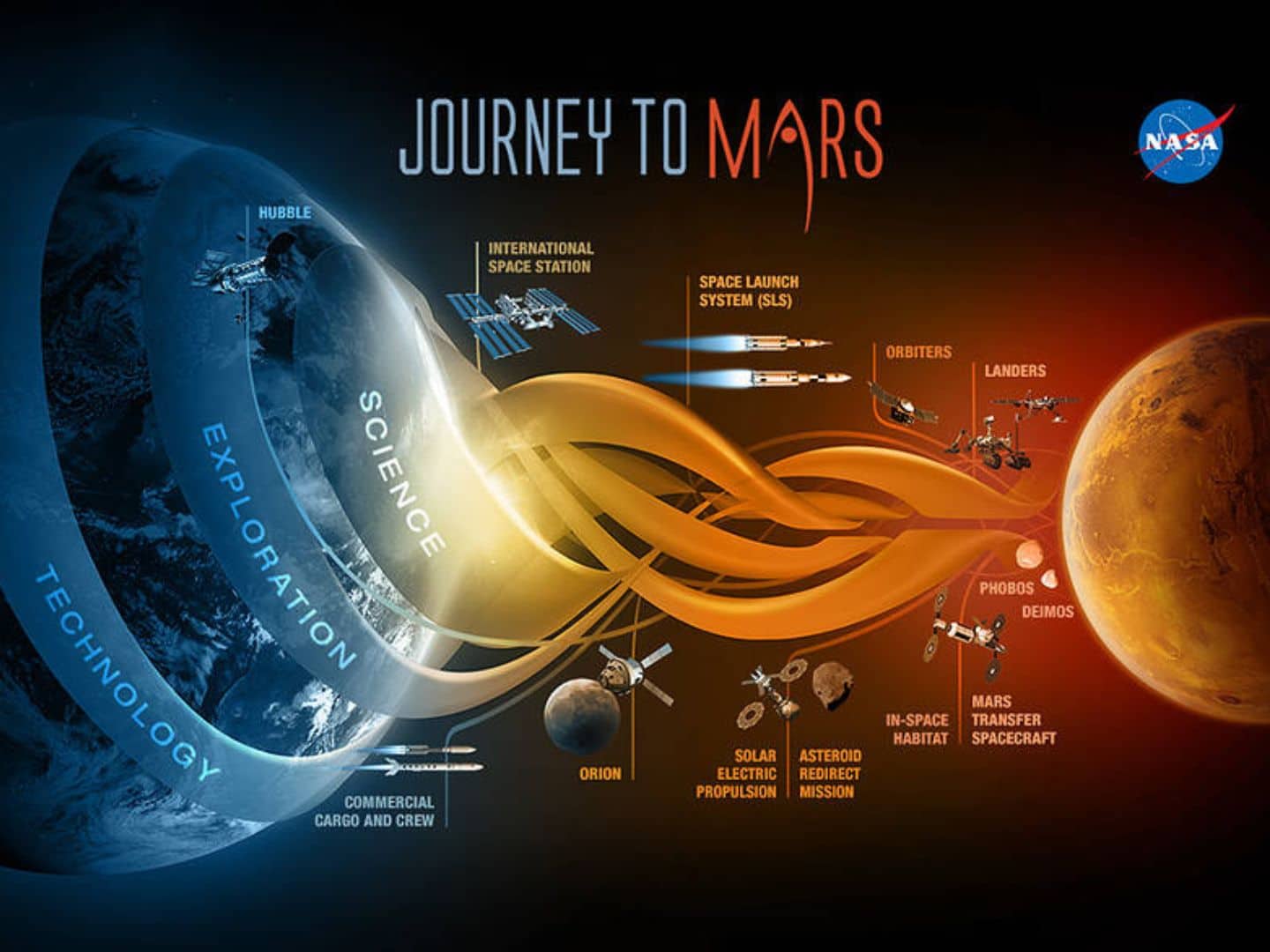
Fun fact: The original lunar program that got us to the moon 50 years ago was called the Apollo Missions. Now, the Artemis Program pays homage to that as Artemis is Apollo’s sister in mythology.
Important terms/words to know:
- Artemis Program: refers to the overall collective efforts of the individual missions and technology used for our return to the moon and getting to Mars.
- Orion spacecraft: the actual vehicle astronauts will ride in and will use to land on the moon, with the ability to stay longer.
- Space Launch System (SLS): The most powerful rocket ever created which carries the Orion spacecraft. It resembles the Saturn V (from the Apollo era) and the Space Shuttles. The term “launch system” is used because there is more to it than the modern rockets we’ve come to know in recent years.
NASA’s reasons for the Artemis Program
- In order to get to Mars, we need to demonstrate new technologies and capabilities
- Further study of the moon will help us understand its origin, our planet, and the Solar System
- Commercial and international partnerships have grown like never before thanks to this program
- Inspire a new generation and encourage careers in STEM
Perhaps one of the biggest takeaways about the reasons for the Artemis Program, is it will enable astronauts to stay on the moon for longer periods of time. And, we will travel further into space than ever before.
By going to the moon and spending more time there NASA can learn more about long-term exploration in deep space. One of the main goals is to learn how to live and operate on the surface of another celestial body where astronauts are just three days from home.
The technologies we need before sending astronauts on missions to Mars, which can take up to three years roundtrip, will be tested through the Artemis Program.
The Artemis Team
Once the Artemis missions include astronauts, NASA will land the first woman and first person of color on the Moon. Thanks to innovative technologies NASA will be able to explore more of the lunar surface than ever before.
NASA has named the crew of the Artemis II mission. These explorers represent the best of humanity, daring to forge new frontiers in space on behalf of humanity.
- Reid Wiseman, Commander
- Victor Glover, Pilot
- Christina Hammock Koch, Mission Specialist
- Jeremy Hansen, Mission Specialist
A great way to celebrate this milestone of having the first woman to land on the moon, is the First Woman Graphic Novels and Interactive Experiences. Through a series of graphic novels and digital platforms, “First Woman” celebrates the next generation of explorers who will return to the Moon.
Artemis Program Launches and Lunar Schedule
- Artemis I, launched November 16, 2022, was unmanned. This launch tested the SLS and Orion spacecraft for safety.
- Artemis II is anticipated for May 2024. This mission will include astronauts who will orbit the moon.
- Artemis III is anticipated for 2025 (or 2026) and will mark the first lunar landing.
READ: The BEST places to watch a rocket launch
Fun Facts about Orion and the SLS
- The spacecraft that astronauts will ride for their trips to the moon is called Orion
- Orion will be launched into space using the Space Launch System (SLS)
- Orion space capsule can carry six astronauts beyond LEO or Low Earth Orbit
- Orion can last up to six months docked and 21 days undocked
- The SLS is taller than the Statue of Liberty
- Its thrust is as powerful as 160,000 race car engines
- Orion will reach 25,000 mph thanks to SLS – that’s 50 times faster than an airplane
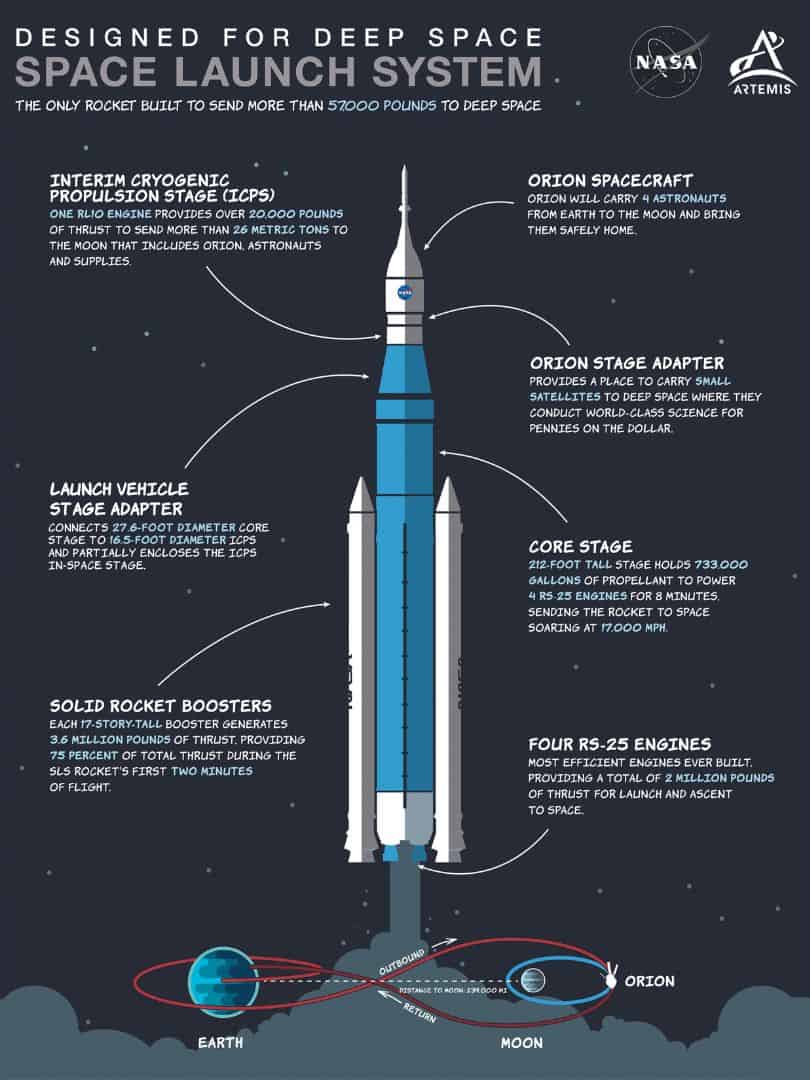
The above fun facts are included in the digital book “You Are Going.”
How to Get Kids Involved in the Future of Space
During the press event in preparation for the Artemis I launch we spoke with Randy Lycans, Vice President at Jacobs Engineering Group as well as Annette Hasbrook, Senior Advisor, Orion Program at NASA.
Annette Hasbrooke reminded us of something crucially important. “The generation that worked on the Space Shuttle, International Space Station, and now the Artemis Program with Orion is aging out. And the next generation is needed,” explains Annette.
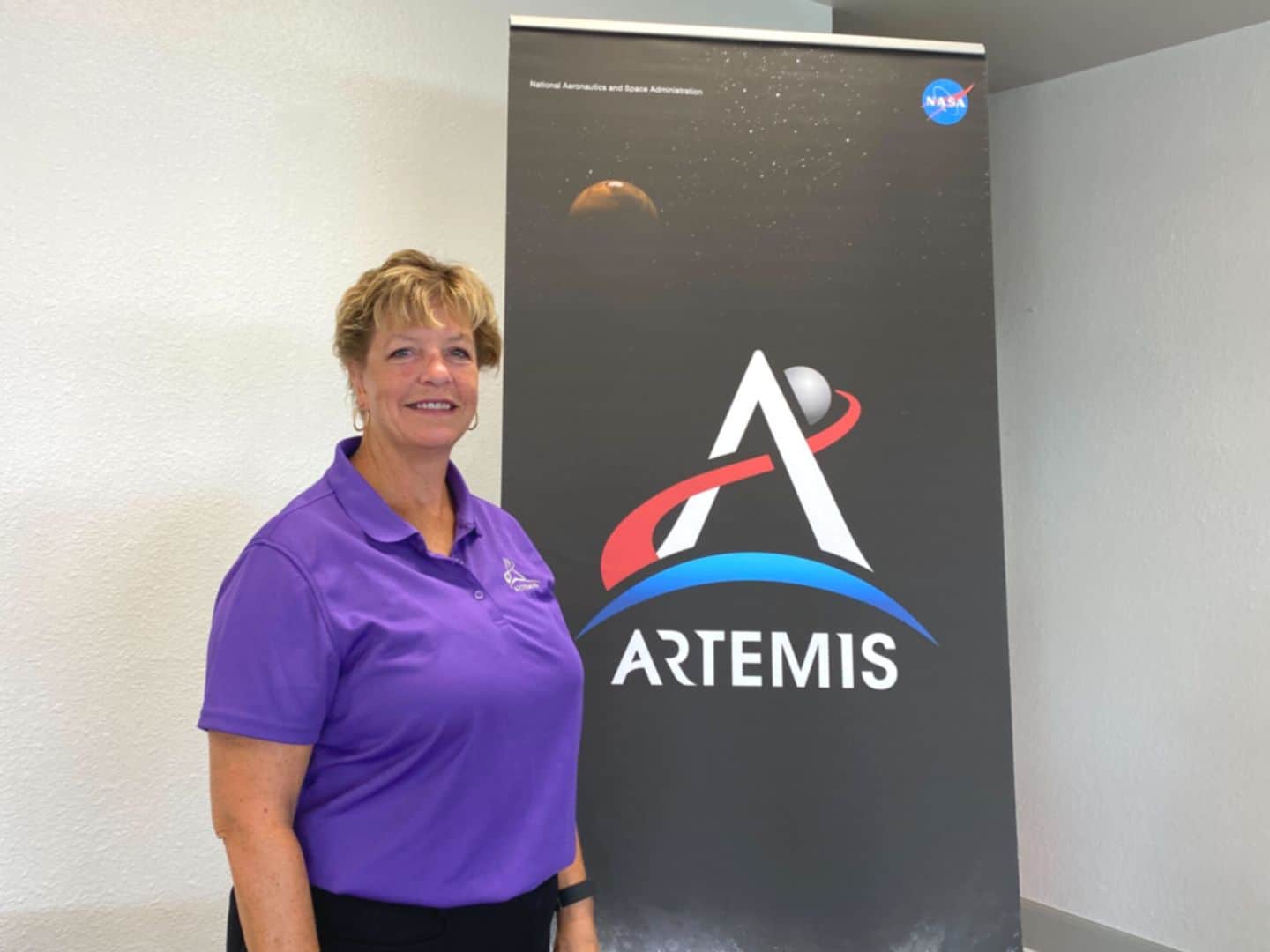
“The International Space Station started my career and now Artemis is designed to be a long-term program that is evolving,” shares Annette Hasbrook. “We’ll start off with test flights, then lunar exploration and lunar colonies, and then building the stuff to get us to go to Mars. So the kids now have such a huge opportunity to go through their STEAM education and have these next steps waiting for them. And it’s not just about science and such. We need communicators, and illustrators, administrators, and all kinds of roles and skills to get involved as the program evolves.”
Randy Lycans shares that it takes more than scientific know-how to make a difference in projects like the Artemis Program, “you can be the most brilliant scientist in the world, but if you cannot communicate what it is that you’re trying to convey, you’re not really going to succeed in your mission. So it takes a variety of skills including soft skills to have a successful role in all of this.”
Randy Lycans also provided this key reminder for the next generation, “Whatever it is that lights you up, that you feel like you are drawn to do, there is a need for that skill.” Randy continued saying, “I hope kids will go and experience life, and find what excites them. And I promise you there is a way for them to contribute.”
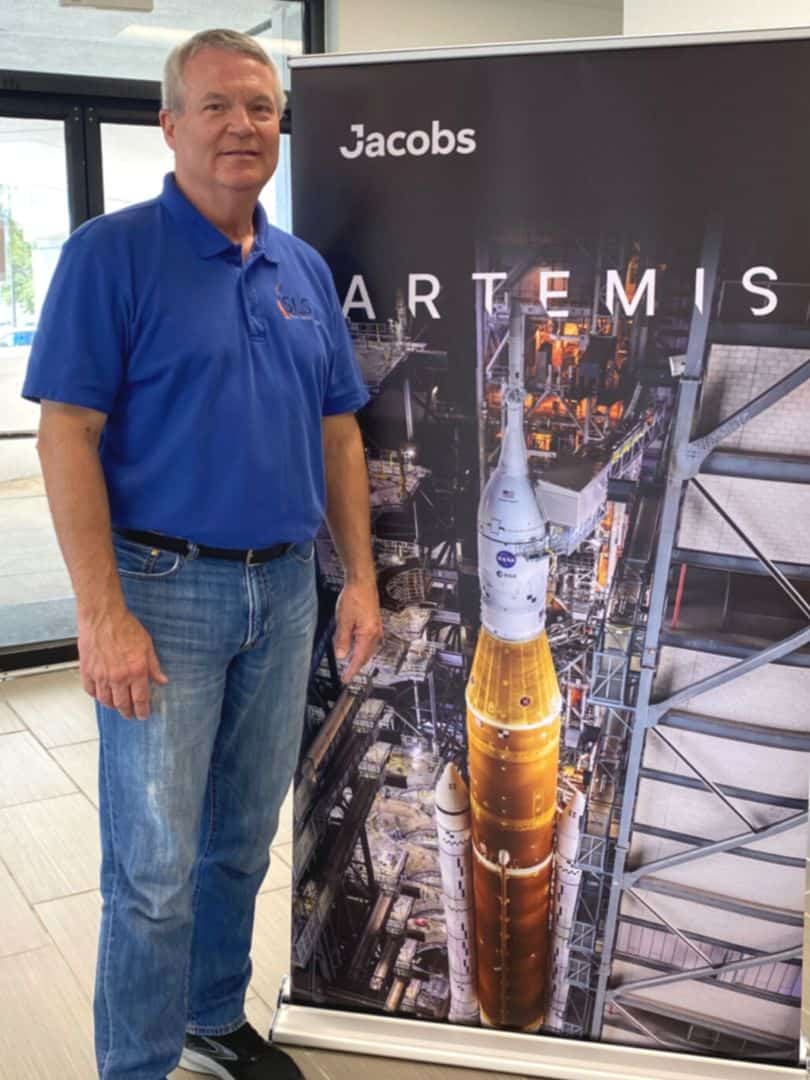
When speaking with Randy, my personal favorite moment came from a quote from someone that Randy works with. “There’s a great saying that our Center Director, Marshall, has – ‘If you want to go fast, go alone. If you want to go far, go as a team.’ That’s something I truly believe in.”
Want some educational resources about Artemis?
NASA has a dedicated webpage full of educational resources, videos, games, activities and more. There is even a special section for Kids and Families.
Build It! You can download instructions and build your own model of the SLS.
Watch videos with LEGO characters: NASA is teaming up with LEGO Education to bring students and teachers an out-of-this-world STEAM learning experience. “Build to Launch” puts students in the shoes of NASA engineers, scientists, and astronauts. Explore the technology, STEAM concepts, and careers behind the Artemis I mission to the Moon.
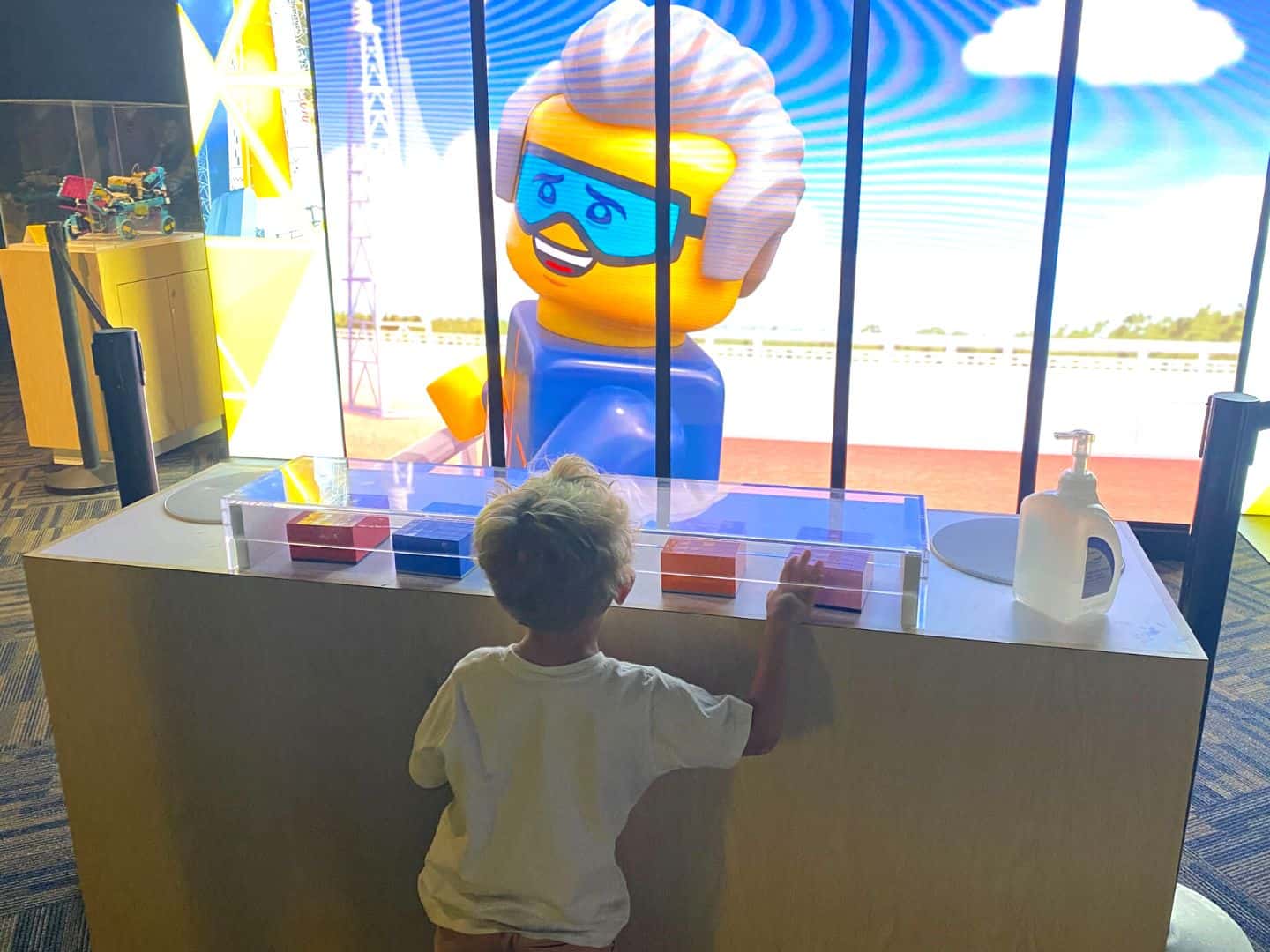
Visual aids: We especially love the infographics page from NASA. What a great way to get your kids and students excited! We all know great visuals make a difference in solidifying concepts.
Visit Kennedy Space Center
Of course, a trip to Kennedy Space Center in Central Florida is sure to get your family excited for space travel. There are multiple hands-on ways to learn about the Artemis program as well as the future of space exploration.
The latest addition to the complex is a fantastic live show. “All Systems Are Go” featured The Peanuts gang, including Snoopy, Charlie Brown, and all your favorites.
During “All Systems Are Go” your family will enjoy a 20-minute live show using adorable puppets of The Peanuts, awesome projection technology to set the scenes, and moving music.
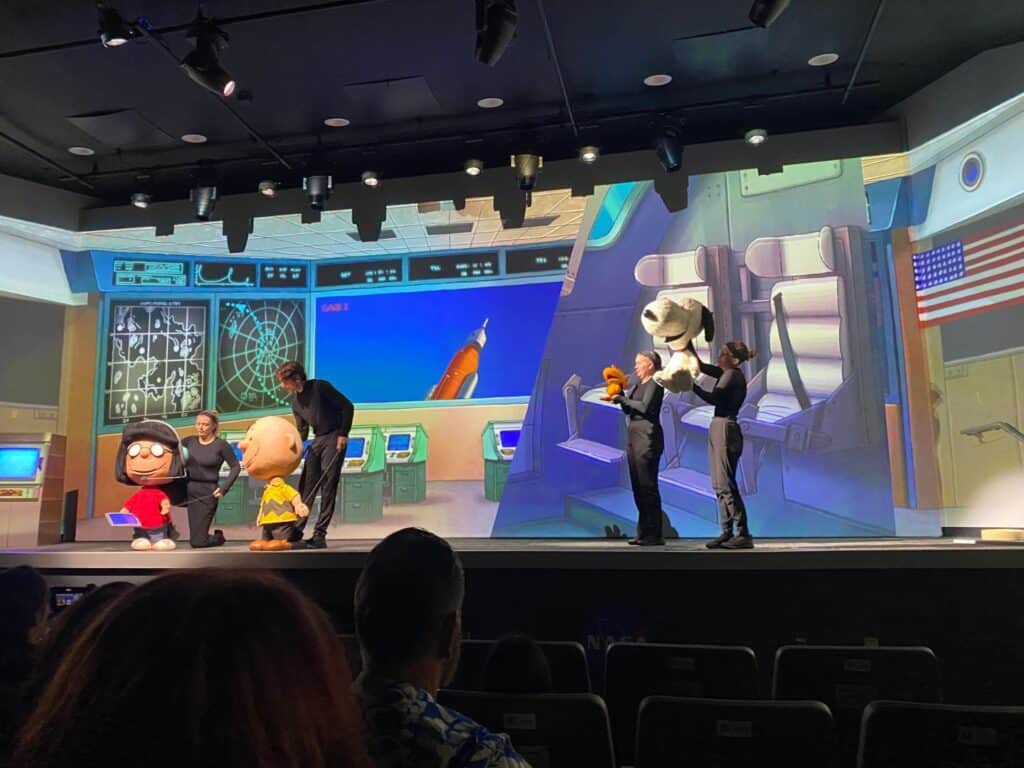
My son and I attended a special premiere of the show in March 2023. We both loved it. My son is five years old and has learned a lot about the Artemis program – he was on the edge of his seat. This show is the perfect encapsulation that explains why the Artemis missions are so important and groundbreaking. But besides that, it is full of heart and warmth.
Have fun inspiring the Artemis Generation. What an exciting event to witness!
Did you know? The Artemis logo is full of symbolism!
- The tip of the “A” extends beyond the moon, signifying that NASA’s lunar efforts are not an end, but rather the preparation for what lies beyond.
- The crescent Earth at the bottom of the logo depicts missions from humanity’s perspective.
- This crescent also illustrates Artemis’ bow as the source from which all energy and effort is sent.
- The trajectory is drawn from left to right through the crossbar of the ‘A’ opposite that of the Apollo program logo, highlighting the distinct differences in NASA’s return to the moon.
- Further, the trajectory is red to symbolize the path to Mars.
- Finally, the moon is included as NASA’s next destination and a stepping stone for Mars.
Feature image: Space Launch System of the Artemis Program (Photographer: Brandon Hancock / Source: NASA)
More stories we think you’ll LOVE:
- 5 Fun Ways to WOW Your Kids with the Wonders of Space
- 5 Cool Connections Between Tampa Bay and Outer Space
Feature image: Space Launch System of the Artemis Program (Photographer: Brandon Hancock / Source: NASA)
Originally published in 2022, updated March 2023




